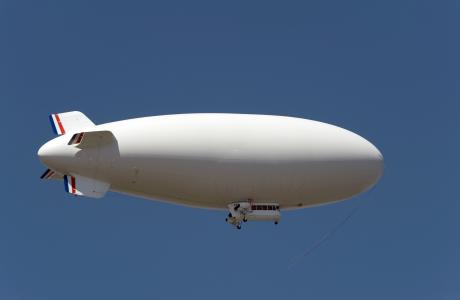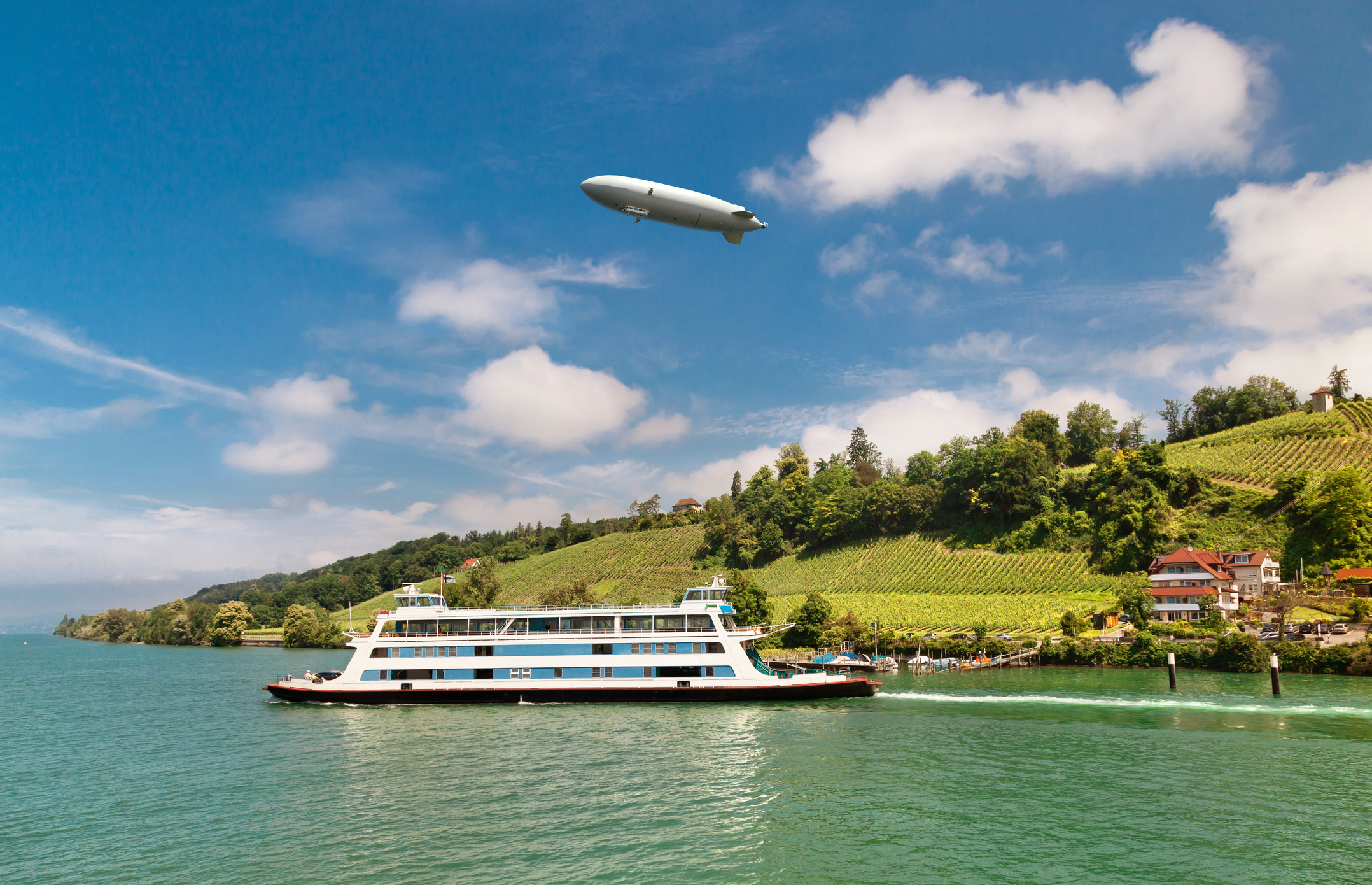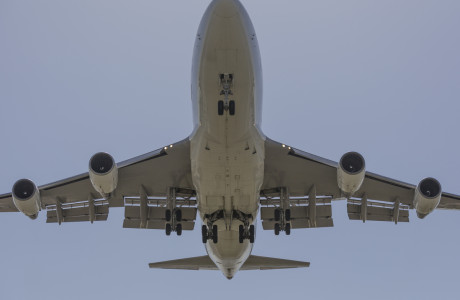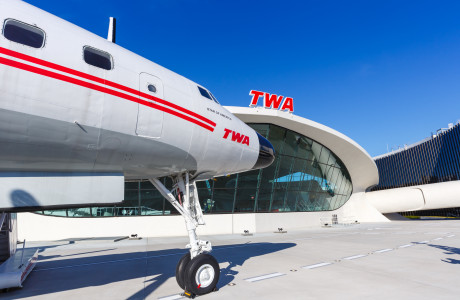
Zeppelins: All about the Legendary Airships
Zeppelins are symbols of the early 20th century. But while they were considered an impressive technological achievement at the time, they are now regarded as a relic of bygone times. What led to the rapid rise and equally rapid fall of airships? How did they work and how were they constructed? And are Zeppelins still in use today? Here you will find everything you need to know about these iconic flying machines.
Contents
Zeppelins & Airships: Is there a Difference?
The name Zeppelin goes back to the inventor Ferdinand Graf von Zeppelin and actually refers to a specific type of rigid airship manufactured by Luftschiffbau Zeppelin GmbH. However, the commercial success of the Zeppelins ensured that the term is now often used internationally as a synonym for airships in general. Airships can actually be divided into three groups according to their design:
Rigid airships: This also includes Zeppelins. As the name suggests, the large lifting body has a rigid hull. This is why the shape of rigid airships does not change even without gas filling.
Semi-rigid airships: This design does not have a complete framework, but has rigid elements on the underside of the buoyancy chamber to which the nacelle and motors are attached.
Blimps: These airships basically work like a hot air balloon, the shape is held completely by the gas filled in. The gondola and motors are attached directly to the buoyancy chamber.

Zeppelins: Design & Technical Data
From the first designs to the last "classic" Zeppelins built in the Hindenburg class, the airships underwent a number of significant design changes. The cigar-shaped buoyancy chamber with its rigid metal skeleton and at least one gondola underneath, from which the Zeppelins were controlled, remained the same.
How does a Zeppelin fly?
The buoyancy body of a Zeppelin contains several gas balloons that are suspended in the metal frame. This allows the Zeppelin to rise.
How does the Zeppelin propulsion system work?
Several motors are attached to the gondola, which set the Zeppelin in motion. Reverse motion was also possible with some Zeppelins.
What is the Zeppelin filling made of?
The filling of the Zeppelins varied over time. Hydrogen was often used, but it had the disadvantage of being highly flammable, which led to strict safety precautions regarding open fires on board the Zeppelins. Smoking, for example, was only permitted in a smoking room with a single electric lighter, which was not allowed to leave the room and was operated by a steward. The non-flammable helium was not economical due to its rarity and corresponding costs at the time. Blue gas was also often used, which offered advantages for long-haul flights due to its low weight.
How fast does a Zeppelin fly?
While the first Zeppelins had speeds of just over 20 km/h, the models in their heyday were traveling at over 100 km/h.
How does a Zeppelin land?
Historic Zeppelins usually "anchored" like ships. They were moored to masts using lowered ropes and could be pulled to the ground. Today, they can be landed by aligning the engines.
How many Zeppelins were there in the world?
Luftschiffbau Zeppelin produced 130 of the "real" Zeppelins. Construction of the LZ 131 was started but not completed.
When was the Zeppelin invented?
The first designs and patents for rigid airships existed in the 1870s. However, construction only began towards the end of the 1890s. The first Zeppelin was completed in 1900 and was the first completed rigid airship, and the zepplin flight over Lake Constance in July of that year was the maiden flight for this type of airship.
What does a Zeppelin look like from the inside?
The structure of the airships differs greatly in some cases. While the passenger compartments of early Zeppelins were located in the gondola, some of them were later located inside the buoyancy chamber. The equipment could vary greatly: Some Zeppelins offered genuine luxury, while in the well-known Hindenburg Zeppelin, for example, the cabins were rather sparsely furnished and passengers mainly stayed in the communal areas. Early models also lacked any heating, which meant that passengers wrapped themselves in jackets and blankets, especially on transatlantic flights.

Zeppelins in history
Early years: 1900-1918
The first airships proved to be very error-prone. The first explicitly civilian airship was the Zeppelin 5 Luftschiff (LZ 5) in 1909. In the same year, the Deutsche Luftschiffahrts-Aktiengesellschaft (DELAG) was founded, the world's first airline. Particularly from the beginning of the First World War in 1914, more and more Zeppelins came into the possession of the military, where they were used as bombers and reconnaissance aircraft. Due to military requirements, numerous technological developments were made during this time, but at the end of the war all remaining Zeppelins were handed over to the Allies as reperations.
Golden years: 1919-1935
The real heyday of the Zeppelin did not begin until the 1920s. While the further production of airships in Germany was initially prohibited after the war due to their military potential, the USA finally ordered new German-made Zeppelins, as their own designs did not meet the requirements. In 1924, the LZ 126 was transferred to the USA; the transatlantic flight to Lakehurt, New Jersey, took around 80 hours (there were no public airports in New York at the time). The next airship, the LZ 1927 – better known as the Graf Zeppelin – was completed in 1928. From October 11 to October 15 of the same year, this Zeppelin flew from Friedrichshafen to Lakehurst, completing the first commercial passenger flight across the Atlantic. This was followed by a flight around the globe in 1929 and a research trip to the Arctic in 1931. From 1930, regular transatlantic flights were made, including to Rio de Janeiro.
End of an era: 1936-1940
In 1936, the world's largest Zeppelin, the LZ 129 Hindenburg, was completed. A Zeppelin of this size followed with the LZ 130 Graf Zeppelin II, but it was the Hindenburg that made airships worthless as commercial passenger aircraft. Initially used by the National Socialists for propaganda purposes, the airship caught fire on its approach to Lakehurst on May 6, 1937 and rapidly went up in flames due to the flammable hydrogen, killing a total of 36 people. The seemingly apocalyptic images of the Hindenburg crash completely destroyed the reputation of airships. The new Graf Zeppelin II did not complete a single passenger flight and all remaining Zeppelins were scrapped by 1940 at the latest. After the end of the war, the technically superior passenger aircraft finally made the Zeppelin obsolete.
By the way: Why did the Hindenburg crash? This has not yet been finally clarified. Contrary to earlier theories, however, sabotage has been largely ruled out; it is more likely that static discharges in the air set fire to the highly flammable hull of the Zeppelin.
Zeppelins Today & Other Modern Airships
The era of the classic Zeppelin may be over, but there has been a small renaissance. Since the 1990s, Luftschiffbau Zeppelin GmbH has been producing the Zeppelin Neue Technologie (Zeppelin NT), a class of semi-rigid airships. Due to their quiet flight behavior and potentially long flight duration (up to 24 hours), they are particularly suitable for tourist purposes or scientific observations. The Zeppelin NT has also been used for photography and reporting from the air. The Zeppelin filling today is non-flammable helium – accidents like that of the Hindenburg airship are therefore prevented. A total of 7 models of the series have been built to date.
Other modern airships are mainly impact airships. They are primarily used for advertising purposes.
So if you want to be transported back to the past of aviation and book a Zeppelin flight, the Zeppelin NT models offer a suitable option today. We hope you enjoy a spectacular Zeppelin sightseeing flight.



